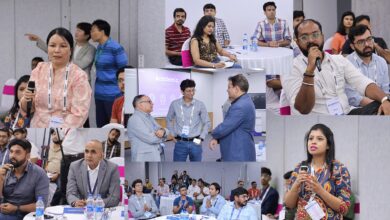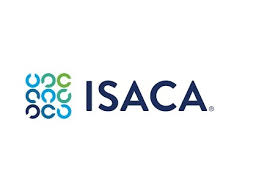Fundamentals of the Recently Launched Cervical Cancer Vaccine by Art of Healing Cancer
Cervical cancer is the fifth most common cancer among women globally according to World Health Organization (WHO). India accounts for one-fifth (1/5th ) of the global burden of the disease. Every year in India, approximately 1.23 lakh women are diagnosed with cervical cancer and around 67,000 die from the disease.Business Wire IndiaCervical cancer is the fifth most common cancer among women globally according to World Health Organization (WHO). India accounts for one-fifth (1/5th ) of the global burden of the disease. Every year in India, approximately 1.23 lakh women are diagnosed with cervical cancer and around 67,000 die from the disease. It is the second most common cancer affecting women in India. India has a population of approximately 43 crores women aged 15 years and older who are at risk of developing cervical cancer.
According to Dr. Mandeep Singh Malhotra (Clinical Lead & Chief Mentor, Art of Healing Cancer [AOHC- www.artofhealingcancer.com]); Surgical Oncologist, “Human Papilloma Virus (HPV) prevalence among cervical cancer patients in India has varied from 87.8% to 96.67%. HPV is key element and a primary reason for the development of cervical cancer. Therefore, preventing HPV infection can prevent majority of cervical cancers. Of more than 100 HPV types, Type 16 and 18 have been categorized as high-risk types, while the rest are low-risk types for cervical cancer. HPV also causes vulvar, vaginal, anal, penile cancers and oropharyngeal (Throat) cancers as well as precancerous lesions of vulva/vagina, genital warts, and respiratory papillomatosis. HPV infections are most of the time asymptomatic, and generally, individuals are not aware of being infected, thus facilitating the spread easily and unknowingly. Most sexually active women get infected with HPV between the ages of 15 and 25 years. HPV is transmitted via sexual contact, through the genital skin and mucosa rather than in body fluids.”
Dr. Sonal Jain ( MD, Art of Healing Cancer); hematopathologist who was involved in Covaxin and Corbevax development elaborated on the types of HPV vaccines available in India, “HPV vaccines are based on virus-like particles (VLPs) that are formed by HPV surface components. VLPs are not infectious because they lack the virus’s DNA. However, they closely resemble the natural virus, and antibodies against the VLPs also have activity against the natural virus. Until now, two HPV vaccines by foreign manufacturers were available in India: the quadrivalent vaccine (Gardasil Merck), and a bivalent vaccine (Cervarix from GlaxoSmithKline)."
GARDASIL, Human Papillomavirus Quadrivalent (Types 6, 11, 16, and 18) Vaccine, Recombinant, vaccine provides >90% protection from HPV types which are responsible for 70% to 80% of cervical cancers and at least 90% of cases of genital warts.
CERVARIX [Human Papillomavirus Bivalent (Types 16 and 18) Vaccine, Recombinant] Recombinant, vaccine which provides protection against cervical cancer but not from genital warts caused by HPV types 6 and 11.
CERVAVAC- Cervavac is the first indigenously developed, quadrivalent human papillomavirus vaccine made by Serum Institute of India (SII), protecting against HPV types 6, 11, 16, and 18. Cervavac was studied in vaccine trials that were started in September 2018 in 12 sites across India. It was launched on September 1, 2022, after the Drugs Controller General of India (DCGI) granted SII market authorization.
Mr. Arpan Talwar (Co-Founder, Art of Healing Cancer) praises, SII and government’s measure of bringing down the cost of CERVAVAC drastically. CERAVAC is almost 10 times cheaper than other brands. This will help the science of cancer prevention in the form of vaccine to reach majority of Indian population and will save large number of women from cervical cancer and men from throat & penile cancer.
Dr. Mandeep reveals that according to National Immunization Program (NIP) HPV vaccine is recommended to all females between 12 to 26 years of age. It can be given from 9 years of age. The response is better in younger age, studies have shown best response up to 14 to 15 years. Research has shown that the two-dose schedule is effective for children under 15. Teens and young adults who begin the vaccine series later, at ages 15 through 26, should receive three doses of the vaccine. US FDA suggests, “If you’re of age 27 to 45, discuss with your doctor whether he or she recommends that you get the HPV vaccine.” The protection provided by HPV vaccines lasts a long time. People who received HPV vaccines were followed for at least about 12 years, and their protection against HPV remained high with no evidence of decrease over time. The vaccines do not prevent other sexually transmitted diseases, nor do they treat existing HPV infections or HPV-caused disease. Henceforth, the vaccine is most effective before the HPV exposure i.e. before start of active sexual life. It can be given to boys also as HPV virus is one of the common causes of oropharyngeal and penile cancer and the vaccine also provides protection against common HPV viruses causing anogenital warts. In theory, vaccinating boys against the types of HPV associated with cervical cancer might also help protect girls from the virus by possibly decreasing transmission. Research has also shown that fewer teens and young adults are getting genital warts and that cervical precancers are decreasing since HPV vaccines have been in use in the United States. More than 12 years of safety monitoring show that the vaccines have caused no serious side effects. The most common problems have been brief soreness and other local symptoms at the injection site. The HPV vaccine isn't recommended for pregnant women or people who are moderately or severely ill.
Mr. Manjit Singh (Director, Guru Harikrishn Foundation) describes Cervavac to have the potential to reduce cervical cancer incidence by 90% and by making the vaccine indigenous, we can pass on the benefit to majority of India's population.![]()
Disclaimer: This content is distributed by Business Wire India.



